Dislocated Shoulder
Dislocated Shoulder Symptoms and Causes
Your shoulder is the most complex and mobile joint in your body, as it allows for the most range of motion. Within this intricate joint, bone and soft tissue region, many issues can occur, such as a dislocated shoulder. A dislocated shoulder can be partially out of the socket (shoulder subluxation or partially dislocated shoulder) or it can be fully dislocated, causing the ball and socket to be completely disjointed.
Often, just getting your shoulder back in place provides a great deal of relief; however, Dr. Sforzo and Dillingham also focus on reestablishing stabilization and strengthening your shoulder via multiple advanced methods. Dr. Sforzo and Dr. Dillingham are experts at treating dislocated shoulders for their patients, as well as the professional athletes they treat.
The glenoid socket houses the ball of the humerus bone that runs down the top of your arm. Your shoulder can also have a dislocated shoulder blade. Whether from acute trauma or chronic repetitive movement, the glenohumeral joint can become unstable and the ball and socket can dislocate.
A dislocated shoulder will cause you tremendous pain and discomfort until it is put back in place by an Orthopedic Surgeon. This condition also causes numbness and tingling to permeate down your arm and back. Partially dislocated shoulder symptoms and complete shoulder dislocation can include pain, instability, weakness, swelling, noticeable dislocation and arm tingling.
A dislocated shoulder can happen to anyone at any age (even dogs), but it most commonly affects teens and young adults who are active in sports.
Shoulder Dislocation Treatment
How to treat a dislocated shoulder:
- Closed reduction: If your shoulder has not started to spasm, the orthopedic surgeon can gently place the humerus bone back into the glenoid socket without much discomfort, and once it is back in place, the pain typically subsides quite quickly. A closed reduction does not require surgery. If your shoulder has started to spasm, a numbing agent will be injected before the surgeon manipulates the humerus bone back into the socket. In many cases, trauma is the cause of the injury, such as a fall or aggressive contact sports. If your tendons, ligaments, muscles or shoulder bones are involved, you may need further, more advanced treatment, such as surgery.
- Shoulder dislocation surgery: Surgery is recommended in advanced cases or if you have undergone a shoulder dislocation in the past. The surgery will provide stability for the shoulder by securing the surrounding soft tissues.
- Regenerative medicine: Along with stabilization and surgery, Biologic Regenerative Medicine Injection Treatment has proven to be beneficial for assisting the body’s natural healing, which can greatly benefit any instability issues with a shoulder dislocation.
Unlike other treatments used for the relief of orthopedic pain, biologic regenerative treatments offer unique benefits. They are naturally rich in multiple anti-inflammatory healing factors and contain high levels of growth factors that stimulate tissue healing. Additionally, they include extracellular matrix proteins that bind cells together and a unique form of hyaluronic acid, which acts as a lubricant.
This groundbreaking treatment is administered in our office by Dr. Sforzo, Dr. Dillingham, Dr. Stewart, or Dr. Meinhardt. If you have been suffering from osteoarthritis pain, discomfort from sports injuries or other orthopedic conditions, this may be a great time to make a new treatment choice. Biologic regenerative medicine treatments may free you from having to rely on oral treatments, steroid injections, and viscosupplements. But most importantly, you may be able to delay or entirely avoid further treatment or surgery. Your orthopedic surgeon will take a shoulder dislocation x-ray to evaluate fractures and also an MRI or CT scan to look for soft tissue tears.
Dislocated shoulder recovery time
Rejoining the ball and socket will relieve the pain of a dislocated shoulder. However, healing can take several weeks to several months, depending on the injury. In between this time, the shoulder will most likely feel unstable. Wearing a brace is recommended, as is following an at-home recovery exercise program along with physical therapy to strengthen the area is essential.
Many times, rotator cuff tears will follow a shoulder dislocation due to the instability of the shoulder joint. Shoulder dislocation often involves the ligaments, cartilage, tendons, muscles, nerves and blood vessels.
Shoulder dislocation precautions
If you’ve had a shoulder dislocation in the past, the best way to prevent and be cautious about re-injury (chronic shoulder instability) is to avoid contact sports and to maintain a proper stretching and exercise routine on a regular basis to build strength and mobility. It’s important to wear protective gear when doing activities or sports. Physical therapy is also vital for healing and optimal functioning of the shoulder. Our patients can attest to the quality of care provided at our practice and the ongoing follow-ups and training we provide to keep you safe and living your best life.
Sforzo | Dillingham | Stewart Orthopedics + Sports Medicine has a group of elite physical therapists on site. Making our treatment, patient care and communication convenient for patients and ideal for our practitioners.
Types of shoulder dislocations
- Anterior – An anterior shoulder dislocation happens in the front of the shoulder when your humerus bone gets pushed forward and dislocates in the front of the arm. This often occurs when the trauma happens as the arm is extended.
- Posterior – A posterior shoulder dislocation happens in the back of your shoulder. This is when the humerus bone gets pushed backward or upwards and dislocates the joint. This often happens when the trauma happens from excessive movements, such as with a seizure.
- Inferior – This is the least common form of shoulder dislocation, but it does happen when your arm is pushed downward and the humerus bone slides down out of the socket.
Shoulder Dislocation Exercises
Doing the prescribed shoulder stretches and exercises will prevent your shoulder joint from getting too stiff. It will also strengthen and keep your shoulder flexible, which will also prevent future issues.
Frequently prescribed exercises for the dislocated shoulder are as follows:
Shoulder Blade Squeeze
Stand with your feet hip-distance apart, arms hanging comfortably at your sides. Then squeeze the back of your shoulder blades together and hold for several seconds. Repeat 10 to 20 times.
Shoulder Shrug
Standing with feet hip-distance apart. Hold a lightweight in each hand and let your arms hang gently at your sides. Shrug your shoulder up as far as you can and then relax your shoulders back down. Repeat 10 to 20 times.
Wall Push-Ups
Standing away from the wall, place your hands on the wall directly in front of your shoulders. Gently push towards the wall (like a push-up) and re-straighten your arms. Repeat up to 10 times.
Forward Flexion
Sitting in a chair, place your hands on your thighs. Clasp your hands together and straighten your elbows. Gently try and raise your arms up in front of your torso. Keep your injured shoulder as relaxed as possible. Keeping your elbows straight, bring your arms back down. Repeat 10 to 20 times.
Shoulder Extension (Isometric)
Stand with your back against the wall and arms straight at your sides. Keeping your elbows straight, push your arms back into the wall. Hold for 5 seconds, and then relax. Repeat 5-10 times








